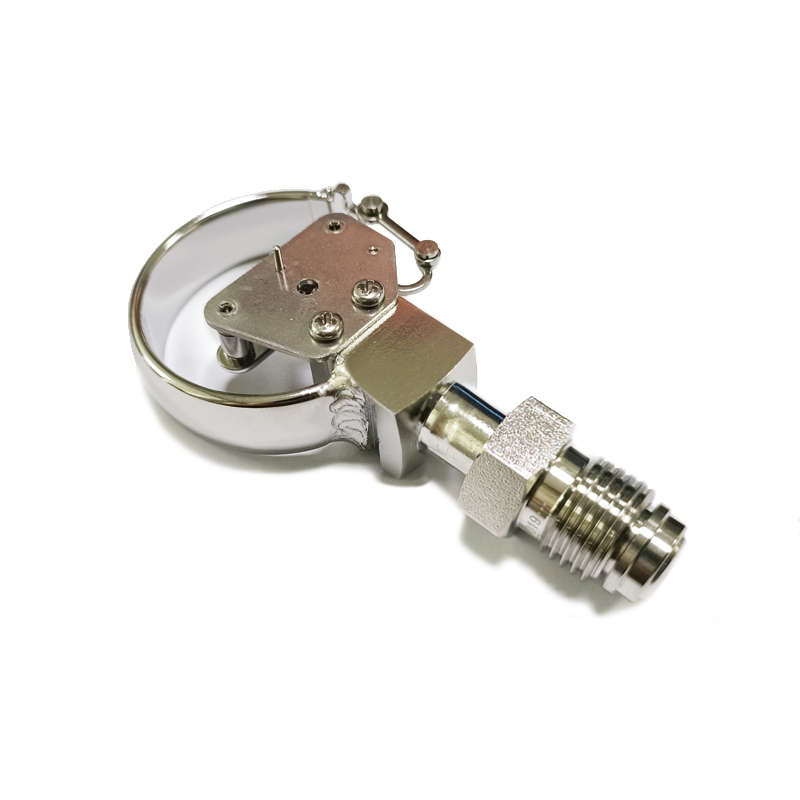
Sep . 26, 2024 03:49 Back to list
Innovative Diaphragm Pressure Gauge Solutions for Accurate Measurement and Performance Optimization
Understanding Diaphragm Contact Pressure Gauge Products
Diaphragm contact pressure gauges are essential instruments widely used in various industrial applications to measure and monitor pressure levels. These devices come equipped with diaphragms that respond to pressure changes, providing a reliable means of ensuring that systems operate within their designated parameters. In this article, we will delve into the working principles, advantages, and applications of diaphragm contact pressure gauges, highlighting why they are indispensable across many sectors.
Working Principle
The diaphragm contact pressure gauge operates based on a relatively simple yet effective principle a diaphragm—a flexible membrane—distorts in response to changes in pressure. When pressure is applied, the diaphragm flexes, causing a mechanical linkage to move. This movement is transmitted to a pointer or a contact mechanism that records the pressure reading. Many models also feature an electrical switch that activates at a predetermined pressure, providing a direct way to interface with control systems or alarms.
The design of these gauges allows them to be highly sensitive while maintaining durability. They can measure a range of pressures from vacuum states to high pressures, making them versatile for different applications. By adjusting the diaphragm’s material and thickness, manufacturers can tailor gauges for specific pressure ranges, enhancing their performance.
Advantages
Diaphragm contact pressure gauges offer several advantages that make them preferable in many situations. First, they are known for their accuracy and reliability. The direct mechanical contact of the diaphragm ensures that readings are obtained without lag, which is crucial in applications requiring real-time monitoring.
diaphragm contact pressure gauge products

Second, these gauges are robust and suitable for harsh environments. The diaphragm can be constructed from various materials such as stainless steel, rubber, or plastic, providing options for compatibility with different fluids or gases. This robustness helps them withstand vibration, shock, and temperature fluctuations, making them ideal for use in industries such as oil and gas, pharmaceuticals, and food processing.
Thirdly, their compact design allows for easy installation in confined spaces, which is often a requirement in modern industrial settings
. Additionally, many diaphragm contact pressure gauges are designed to be low-maintenance, reducing operational costs over time.Applications
The applications of diaphragm contact pressure gauges are vast. In the oil and gas industry, they are used for monitoring pipeline pressures and ensuring safe operation of drilling equipment. In the food and beverage sector, these gauges help regulate the pressure in production processes, ensuring product quality and safety.
In HVAC systems, diaphragm gauges monitor air pressure, ensuring efficient airflow and preventing system failures. Similarly, in the pharmaceutical industry, precise pressure measurements are required to maintain the integrity and safety of products, making these gauges invaluable.
Conclusion
In conclusion, diaphragm contact pressure gauges represent a crucial component in many industrial applications. Their reliable performance, adaptability to various environments, and ease of use make them a favorite among engineers and technicians alike. As industries continue to evolve and modernize, the importance of accurate pressure measurement will only increase, cementing the role of diaphragm contact pressure gauges as essential tools in ensuring safety and efficiency in industrial operations. Whether in a factory setting or a laboratory, the right pressure gauge plays a critical role in maintaining optimal conditions and achieving desired outcomes.
-
High-Precision Mass Diaphragm Pressure Gauge - Reliable & Durable Solutions
NewsJun.10,2025
-
Explain Diaphragm Pressure Gauge Expert Guide, Top Manufacturers & Quotes
NewsJun.10,2025
-
Affordable Differential Pressure Gauge Prices in China Top Manufacturers
NewsJun.10,2025
-
Reliable Water Fire Extinguisher Pressure Gauges for Safety
NewsJun.10,2025
-
Durable Diaphragm Protection Pressure Gauges Get Quote
NewsJun.09,2025
-
WIKA Differential Pressure Gauge with Switch Reliable Monitoring & Control
NewsJun.09,2025
